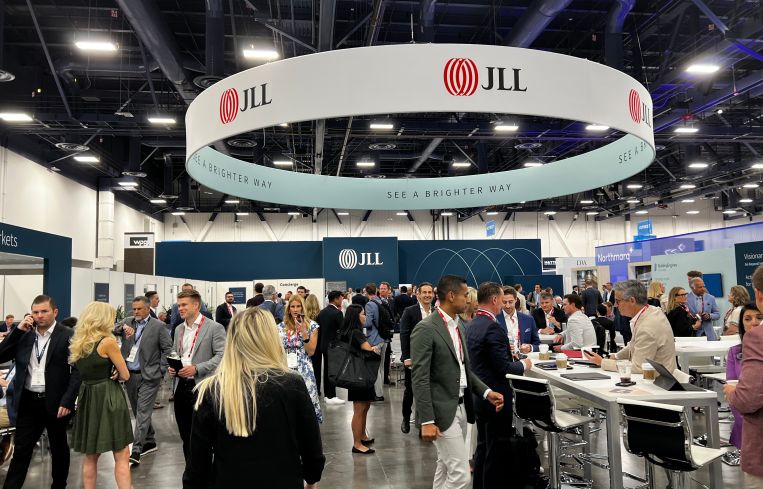Capital Markets Find Their Footing in Retail as Investor Confidence Grows
While the tide of lower interest rates would lift all boats, finance experts told CO at ICSC that opportunities in retail are proving too tantalizing to pass up
By Nick Trombola May 21, 2025 2:32 pm
reprints
Retail is one of the best-performing asset classes in commercial real estate this year, coaxing timid capital markets players out of their collective shells.
Two distinct drivers of retail investment have emerged in recent months, experts said at the national ICSC retail real estate convention in Las Vegas. First, demand for space is high, and primed to only get higher. Average retail vacancy across the U.S. is just 4.1 percent, according to a recent JLL market analysis. And there are very few development projects in the pipeline that could make a sizable dent in the amount of available space, Chris Angelone, co-leader of JLL’s national retail group, told Commercial Observer. That means, retailers looking to expand will face tight supply for the foreseeable future.
The second factor is the sheer amount of pent-up capital and energy that investors are eager to deploy. Stubbornly high interest rates in the years since the pandemic have kept a lid on activity as the market waited for more favorable conditions, but now more investors are discovering new opportunities in retail..
“We’ve seen more capital flow into retail today than we’ve probably seen since back into the early 2000s, pre-Global Financial Crisis,” Angelone told CO at ICSC. “Everyone’s in on retail right now, and so we’ve seen this building, I’d say, over the past 24 months where … retail investors go from retail-curious to retail-serious … everyone’s looking for opportunities of scale, and there are more groups looking for opportunities of scale than there are opportunities of scale.”
Blackstone’s $4 billion acquisition of Retail Opportunity Investment Corporation (ROIC) earlier this year is a clear indication of retail’s power to attract interest from the biggest names in the industry, with the investment giant now controlling all of ROIC’s 93 retail properties across the West Coast. The portfolio totals roughly 11 million square feet.
“When the big institutional investors and the pension funds are looking at their portfolios, [they say], ‘OK, office is not so hot right now.’; With multifamily, all of the sudden, the cap rates that they had on their books are now higher; the industrial they had on their books, now it’s higher,” Bryan Ley, Northmarq’s new managing director of its commercial investment sales team, told CO. “[They’re saying], ‘where can we find yield?’ They’re finding yield in retail. And with institutional capital now saying the same thing, it’s now creating this perfect situation of where there’s just a ton of capital coming off the sidelines, but just not enough deals.”
JLL’s recent retail report is also evidence of growing investor confidence. Transaction volumes in the first quarter of this year hit $9.8 billion, a 13 percent and 12 percent increase over the first quarters of 2024 and 2023, respectively. The figure is still nearly 50 percent less than it was in the first quarter of 2022 when interest rates were close to 0 percent.
Still, Matt Mousavi, senior managing principal and co-head of national net lease at SRS Real Estate Partners, told CO that lower interest rates would be the tide that lifts all boats. The industry is still within a negative leverage environment, Mousavi said, meaning that it can still be a challenge to secure financing to get a deal across the finish line.
“That’s been, frankly, our biggest hurdle,” Mousavi said. “We would do more volume — the industry would have more velocity — if you had more equilibrium. But there’s still a gap there. Lenders are trying to fill that gap, but they’re not having the easiest time doing that. Cap rates are still stubbornly low for a lot of buyers, but the cap rates are low because the fundamentals are strong. So, it’s really still just an interest rate-driven gap. It’s not one based on fundamentals or lack of interest in retail. Retail, arguably, is the best asset class risk-adjusted out there.”
Mousavi is confident rates will go down within the next year, given that the Federal Reserve previously projected four or five rate cuts for 2025, but later lowered that projection to just one or two. Even one or two rate cuts, however, would be gangbusters to investors, because it would signal to the market that more favorable conditions are on the horizon, Mousavi said.
However, even if rates barely or never decline the market will adapt, Angelone said. Current interest rates are not far off from average levels, he said; investors just got attached to the low cost of capital during the pandemic.
“We had historically low interest rates in a one-in-100-year type event that none of us had ever experienced before and hopefully never will experience again,” Mousavi said. “To think interest rates at those historical lows are going to repeat themselves anytime soon is just really unlikely. I think most people are operating under the assumption that rates will remain higher for longer still — but I don’t even feel like they are that high on a relative basis.”
Nick Trombola can be reached at ntrombola@commercialobserver.com.


